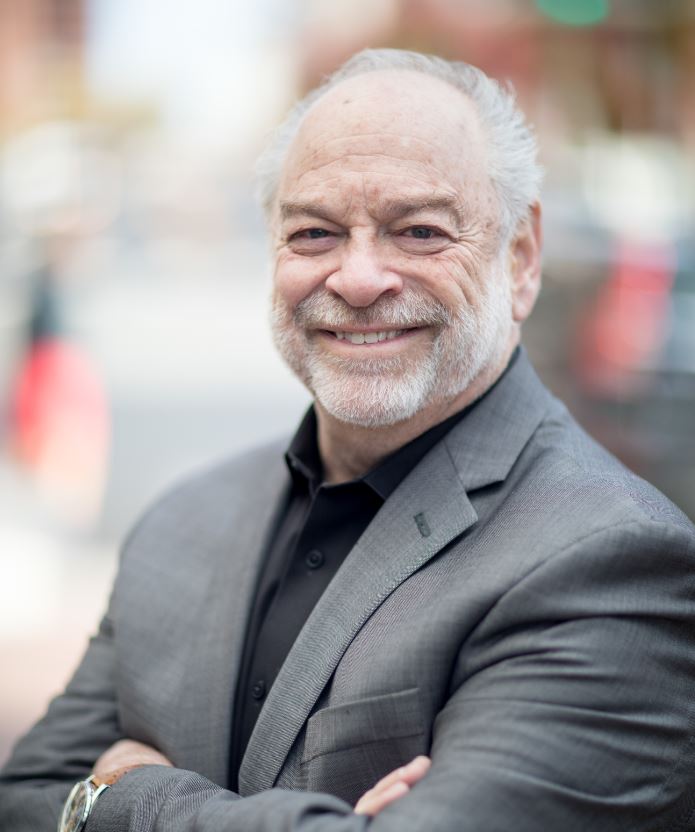 For our latest Expert Insights series, we had the pleasure of chatting with Professor Dennis Frenchman, Class of 1922 Professor of Urban Design and Planning at MIT, where he is the former Director of City Design and Development and chair of the Masters in City Planning program.
For our latest Expert Insights series, we had the pleasure of chatting with Professor Dennis Frenchman, Class of 1922 Professor of Urban Design and Planning at MIT, where he is the former Director of City Design and Development and chair of the Masters in City Planning program.
He is now serving as director of MIT’s Center for Real Estate. Dennis Frenchman has taught and practiced extensively in Asia, Europe, and South America and served as External Advisor on urban livability to the President of the World Bank. A registered architect, he is also founding principal of ICON architecture in Boston an international architecture and urban design firm.
Read on to find out about health-centered communities: what are they, what do they look like, why do they matter, and more.
Q: Tell us a little bit about your background:
Dennis Frenchman’s practice and research focus on the transformation of cities. He has designed large-scale technology-driven developments including the Innovation District, Medellin, Columbia; Seoul Digital Media City in Korea; the Digital Mile in Zaragoza, Spain; and Media City: The UK and is currently planning the Digital Creative City in Mexico. He has a particular interest in the redevelopment of industrial sites and has prepared development plans for the renewal of textile mill towns, canals, rail corridors, steels mills, coal and oil fields, shipyards and ports, including many of national historical significance. Currently, he is leading an MIT research effort to develop new models for clean energy urbanization in China, sponsored by the Energy Foundation. He earned his Master of Architecture in Advanced Studies and Masters of City Planning degrees from MIT.
He is the author of articles and books on advanced urban design, including Technological Imagination and the Historic City (2008, Ligouri, with William J. Mitchell, et al.). His work has been widely recognized including awards from Progressive Architecture, the American Institute of Architects, and three citations from the American Planning Association for the most outstanding projects in the United States.
Professor Frenchman teaches the capstone subject in the Real Estate Development: Real Estate Development Studio: Urban Projects.
Q: Where do you see the real estate industry going in the future?
Demographic shifts, lifestyle trends, new medical research, and innovative health care technologies are all affecting how and where people choose to live and work. This presents a major opportunity for real estate developers, architects, and urban planners—as well as health care entrepreneurs and public health administrators—to make their mark on residential, commercial, and public space design in the coming decades.
There’s been debate on whether the organization and structure of the built environment have a meaningful impact on longevity and health. As that assertion is being tested, we’re finding out yes, it can. And those influential elements are now finding themselves in the real estate development marketplace.
Two big groups are returning to the city and demanding health and wellness options: the Baby Boomers and the Millennials. The aging Baby Boomers are rejecting assisted living communities and looking for housing that will allow them to age-in-place. Millennials, meanwhile, are looking for active lifestyle communities where they can ride their bikes or walk to work and not have to spend two-and-a-half hours a day commuting. In addition, suburban neighborhoods don’t offer access to the culture and activities they want.
On the development side, if you don’t understand what this is and get on the train, you’re going to miss the next sustainability trend. Everybody thought that green buildings were going to be a fad until the public started demanding them. I think we’re headed that way with healthy communities and workplaces.
Q: Your new course discusses health-centered communities. What are they and how do they look like?
A growing body of research supports the premise that the organization and structure of the built environment can have a meaningful impact on longevity and health. Health-centered communities are urban and suburban spaces that are developed in ways to promote the well-being of residents throughout their lifetimes.
Q: What types of design and technologies are involved in this?
Health-centered communities will need to incorporate fundamental design principles that address the challenges and opportunities associated with promoting well-being for all residents. Most importantly, planning and development should be guided by evidence that demonstrates how communities and built environments can influence health and disease.
As these non-medical drivers of health, commonly known as social determinants, become better understood, they are finding their way into the real estate development marketplace, and their impacts can be seen through: choices of mobility that encourage exercise, provision of places for social interaction to enhance wellness, incorporation of local health centers that reduce hospital visits, support for elders to remain in their homes, employment of health sensing and intervention technologies, access to healthy food, clean air, and water, healthy indoor living and working spaces (to name just a few).
Health-centered communities will also include innovative architecture and technologies that support diverse populations that include children, young adults, the elderly, and those with special needs.
Q: Why would you say that these communities matter?
By 2035, the number of households headed by someone over the age of 65 is expected to increase to almost 50 million—that’s one-third of all American households. Harvard’s Joint Center for Housing Studies also estimates that 17 million older adult households will have at least one person with a disability that makes navigating standard stairs, doors, and bathroom layouts difficult.
Meanwhile, less than 4% of current homes offer single-floor living, extra-wide doors, and zero-step entrances.
The future of urban design and architecture will be shaped by designers, public health researchers, health technology entrepreneurs, physicians, and health care administrators, as well as urban planners and officials in local governments who can negotiate the myriad intertwined demographic, public health, and real estate issues.
Q: What should real estate developers know about this?
On the real estate development side, it is critical to recognize this emerging trend and to begin to understand the perspectives of various stakeholders. The intersection between health and the built environment is a dynamic space right now, and there is opportunity to rise to the challenge and identify unmet needs. In many ways, I see this as similar to the green building trend, which many thought was a fad—until the public started demanding construction that was more climate-conscious.
Q: Would you say that the housing preferences of millennials are different than those of earlier generations? Why?
Millennials are now the largest generational cohort and in their prime home-buying age, but their priorities have shifted from earlier demographics. They prefer to live in more densely populated areas because they prioritize community and walkability, and they want green space and leisure options because they value a work-life balance that promotes healthy living.
This demand is driving a new kind of urban design, with smaller private living spaces and more shared public spaces—from parks to wellness centers. This change among younger home-buyers is coinciding with retiring Boomers who would rather downsize in town than move to a retirement community, further fueling the need to rethink urban design.
Q: Is there anything that you believe everyone in this industry should be working towards?
Effective planning and development of health-centered communities requires a multi-faceted, collaborative approach. Because the concept is so revolutionary, it could transform the future of urban and suburban planning. That means that professionals across a wide spectrum—including those in the fields of real estate, urban design, health care, public policy, and community development—all need to be engaged. Working together, these disparate groups can develop a strategic vision that creates value, promotes healthy living, supports aging-in-place, and produces communities that thrive.
Q: Any other insights that you’d like to share?
Collaborations between clinical and community organizations will play a key role in the success of health-centered communities. These living environments will need to be able to adapt as new models for health care delivery emerge, and they will also need to respond to a variety of other forces shaping the future of health care, such as economics, digital platforms, sensors, and artificial intelligence.
Interested in being interviewed for our Expert Insights series? Feel free to reach out to us at [email protected] or check out other articles from our series here.










[…] space and leisure options because they value a work-life balance that promotes healthy living,” asserts […]